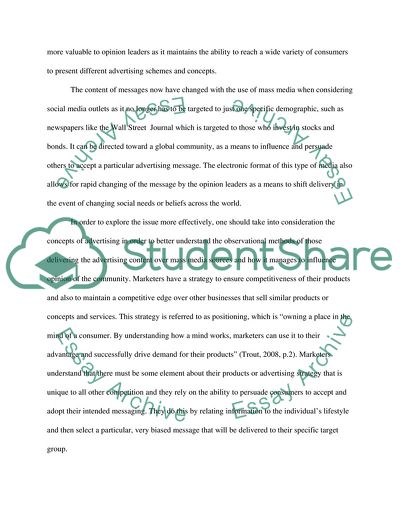Cite this document
(Mass Media's Influence on Public Opinion Essay Example | Topics and Well Written Essays - 1500 words, n.d.)
Mass Media's Influence on Public Opinion Essay Example | Topics and Well Written Essays - 1500 words. https://studentshare.org/media/1757130-observed-and-influenced-public-opinion
Mass Media's Influence on Public Opinion Essay Example | Topics and Well Written Essays - 1500 words. https://studentshare.org/media/1757130-observed-and-influenced-public-opinion
(Mass Media'S Influence on Public Opinion Essay Example | Topics and Well Written Essays - 1500 Words)
Mass Media'S Influence on Public Opinion Essay Example | Topics and Well Written Essays - 1500 Words. https://studentshare.org/media/1757130-observed-and-influenced-public-opinion.
Mass Media'S Influence on Public Opinion Essay Example | Topics and Well Written Essays - 1500 Words. https://studentshare.org/media/1757130-observed-and-influenced-public-opinion.
“Mass Media'S Influence on Public Opinion Essay Example | Topics and Well Written Essays - 1500 Words”. https://studentshare.org/media/1757130-observed-and-influenced-public-opinion.


